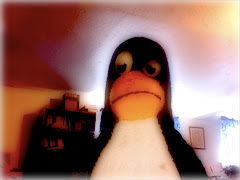I would like to share a little of why we moved up to Washington. If you have not read our letter to the South Hills ward, please do, it gives some of the background of how we are doing and what is going on.
We moved to Washington for the LIGO project. I was hired by Cal Tech to be a systems administrator at the LIGO Hanford Observatory (LHO).
 LIGO Hanford Observatory, while it was still under construction. Picture taken from LIGO website (I have not taken any aerial pictures since I have been hired).
LIGO Hanford Observatory, while it was still under construction. Picture taken from LIGO website (I have not taken any aerial pictures since I have been hired).What is LIGO?
LIGO is an experimental observatory. It does not use telescopes or radio receptors, instead it uses lasers and precision optics. LIGO is an attempt to directly detect and measure gravity.
According to Einstein's general theory of relativity, gravity propagates through space and time as a wave. As a gravity wave passes by it will cause minute distortions in space-time.
When Einstein looked at the size of the distortion in the early 1900s he said that we should not even bother to measure gravity as it would be too hard to do. An example commonly given is that a meter stick would expand or contract by a distance smaller than the diameter of a proton due to the passing of a gravitational wave (you wouldn't want to be close to anything that could cause a distortion in space-time that you could see). Almost a century has passed since the theory of relativity was put forward, bringing with it advances in science and technology. Now it is plausible to look for gravity waves.
This is mainly done with a devices called an laser interferometers. The LIGO observatories look for distortions caused by gravity waves in two long tubes. Lasers are used to measure the length of two perpendicular tubes that will change in length when a gravity wave passes through them.
We do this shooting a laser into the tubes. It reaches a beam splitter which sends the laser down both arms at the same time. Then the light will hit mirrors at the ends of the tubes (4 kilometers away) and bounce back. If the distances are the same (ie nothing has moved, stretched, or contracted) the light will join together and cancel out. If they do not cancel out then there has been some sort of movement or distortion.
There are other tricks that are used, as we need to measure such small changes. The laser is actually bounced back and forth within each arm about 1000 times before it is joined with its other half. This makes a 4km long tube appear to be 4000km long (and we just cannot afford that much land). With the distance amplified this much the distortion caused by gravity will be larger.
The interferometer is very sensitive. It detects vibrations from the wind turbines located several miles away, traffic on the highway, people shutting doors hard, debris going over the local dam, ...
This is one of the things that makes the project difficult. To deal with this there are several things that happen, including:
- They have built and continue to improve an amazing seismic isolation system to hold everything still.
- A lot of work has been put into figuring out what every day life looks like to the interferometer so that that source of 'noise' can be removed from the data.
- There are two interferometers located at different ends of the country (Washington and Louisiana). If an event is noticed at each observatory it may be a gravity wave, if it is only seen at one it is likely a local event (earthquake, tree going over the dam, cars driving by, ...)
What if the general theory of relativity is wrong? Well there are a few other theories on gravity that say it should move in waves, so the scientists here are not putting all their eggs in one theory.







No comments:
Post a Comment